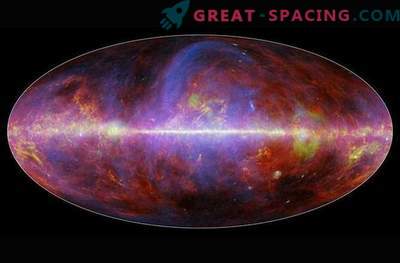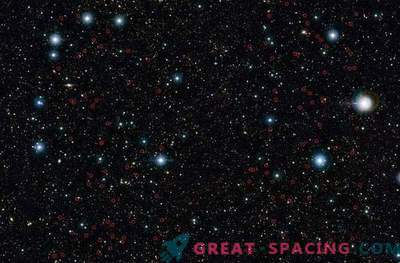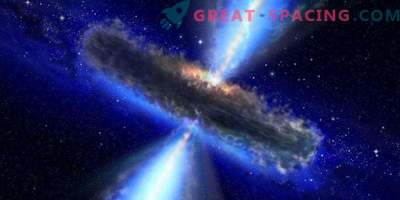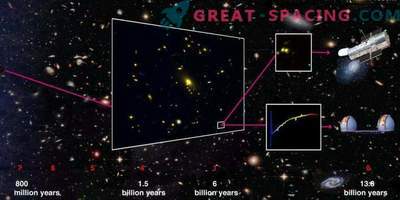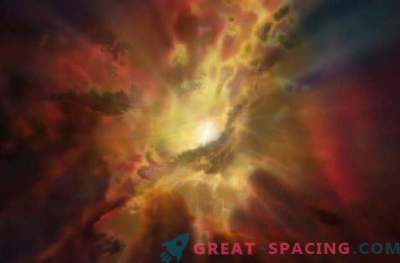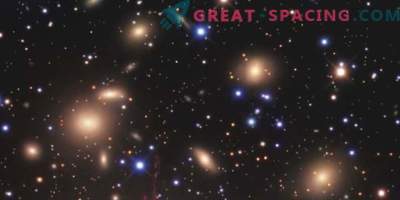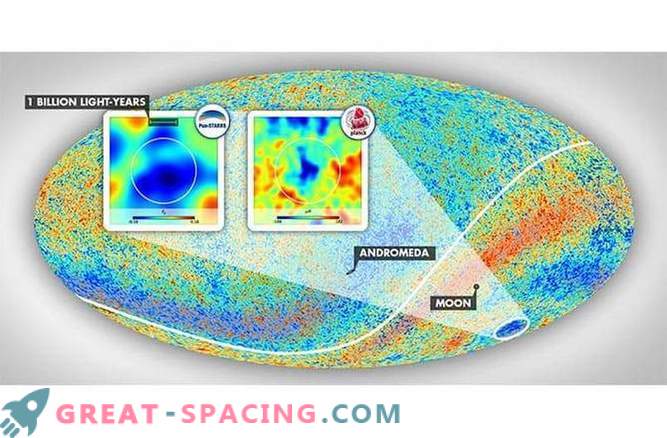
At the farthest corners of the observable universe is one of the most mysterious objects of modern cosmology: the cosmic microwave background cold spot.
Discovered in 2004, this strange feature left a mark on the microwave background of the Big Bang and has been the center of attention for many years. Maybe this is a sign of another universe? Or is it an instrumental error? Now astronomers can accurately tell the nature of the origin of the cold spot, and the multiverse hypothesis is not required to explain this phenomenon. But this is not the error of the device.
When the cold spot was first detected using a NASA cosmic-electron radiation (WMAP) spacecraft, astronomers quickly realized that this formation was the largest structure in space. But since the measurements were carried out with only one telescope, scientists had a fear that this could be an instrumental error.
Then the European Space Agency's Planck telescope, which is used to measure small changes in the temperature of the background radiation (known as anisotropy), also detected a cold spot. Despite some theories, this formation could actually be a mistake caused by our statistical analysis methods, but in this case the stain turned out to be real. One of the most incredible (and, frankly, exciting) hypotheses, explaining the cold spot, is concentrated around the universe. Based on superstring theory, the multiverse claims that our universe is just one of many universes. And what is this cold spot? This may be one of the neighboring universes, which “buried” in our own.
The multiverse hypothesis is certainly one of the most incredible cosmological ideas, but there are other explanations for the cold spot. One of them is the existence of super-emptyness in the Universe between us and the cold spot.
By combining data from the Pan-STARRS telescope located on Halikala, Maui and NASA's WISE satellite, Istvan Sapoudi from the Institute of Astronomy at the University of Hawaii and his colleagues found the largest single structure, and this structure could be formed by an anomalous cold spot.
Previous studies have shown that there is little evidence of a very distant structure in the direction of the cold spot. But, paradoxically, it is more difficult to identify larger structures that are closer to us than more distant ones. By constructing a 3-D map of galaxies, the researchers discovered a huge region located just 3 billion light-years away from Earth (this is close in the large cosmological scheme of things), which has a lower density of galaxies than the rest of the known Universe. This huge super void has a diameter of about 1, 8 billion light years. So what do we do with the cold spot of relic radiation?
Relic radiation - the most ancient form of radiation, which is known in the universe. Formed immediately after the Big Bang about 14 billion years ago, this faint radiation comes to us from the farthest corners of the Universe we observe.
If the CMB “collides” with the super-empty, then due to the Sax effect - Wolf, the radiation characteristics may change. As the universe expands, the radiation passing through the super-void will lose more energy than the radiation that travels through “normal” space, creating a cold mark in the Planck anisotropy map. This imprint will appear in the form of a huge cold spot.
Published by the Royal Astronomical Society in the Monthly Notices magazine, this research cannot definitively associate super-empty with a cold spot, but it is unlikely that this vast super empty, which is in the same spot of the sky as the cold relic radiation spot, is just a coincidence.
